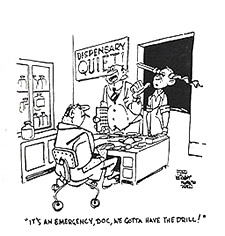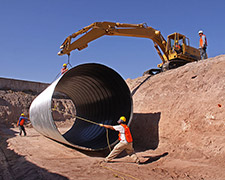Workers’ Compensation
 This Fred Wright cartoon depicts an employer who apparently values his tools more than he does his workers.
This Fred Wright cartoon depicts an employer who apparently values his tools more than he does his workers.Dangerous tasks are all too often common in the workplace. Laws protecting workers date back to ancient times (Hammurabi’s code) and address concepts of social justice and economic efficiency. U.S. laws developed in the late 19th and early 20th century, again following examples from German and British models from previous decades.
The concept is simple—a no-fault insurance plan paid for by employee and employer contributions. By 1920 all but 8 states had developed a compensation plan, providing wage replacement and medical benefits to employees injured in the course of employment. In return workers are forbidden from suing their employers for negligence.
While plans differ from state to state, workers can receive weekly payments in place of wages (functioning in this case as a form of disability insurance), compensation for economic loss (past and future), reimbursement or payment of medical expenses (functioning in this case as a form of health insurance), and benefits payable to the dependents of workers killed during employment (functioning in this case as a form of life insurance). Disabilities may be temporary or permanent, partial or total. Workplace injuries and deaths can result from slips and falls, fires and explosions, accidents by machinery and exposures to toxic substances, among other causes. The latter can also cause workplace illnesses such as lead poisoning, asbestosis and other respiratory disorders and cancers.
Most employees who are injured on the job have an absolute right to medical care for the injury, and in many cases to payments in compensation for resulting temporary or permanent disabilities.
The Occupational Health and Safety Act of 1970 is the backbone of the effort to guarantee safe workplaces, a movement that again dates back to early years of industrial development in this country, and before that in Europe. Guaranteeing a safe working environment and protecting workers from injury is an important aspect of the safety net.
